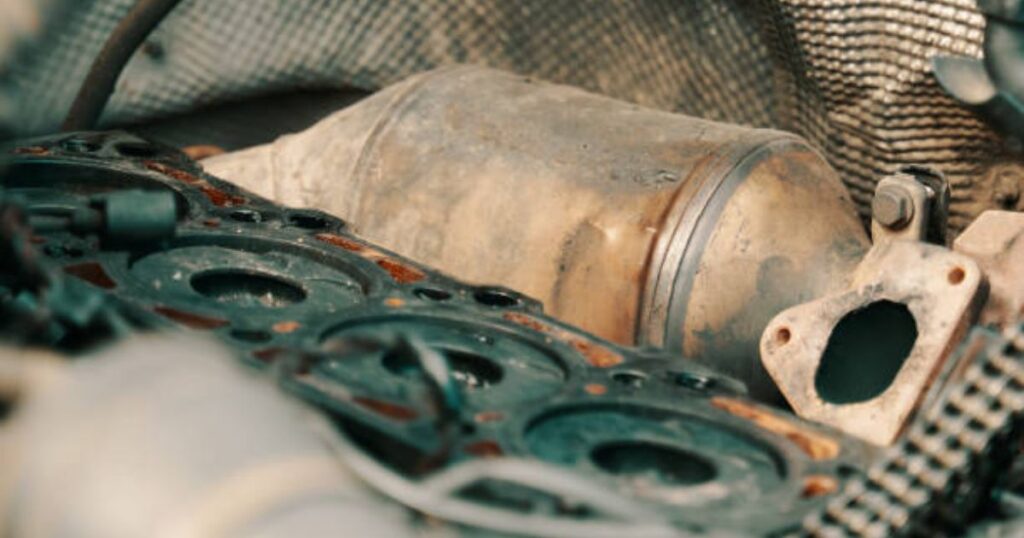To pass emissions with a deleted diesel vehicle can be complicated, but it is possible. You can take measures to ensure that your car passes emissions tests even if you have made modifications.
Here is how to pass emissions with a deleted diesel:
- Optimize your diesel engine’s efficiency and reduce emissions with an OBD scanner.
- Adjust the air-to-fuel ratio to control smoke density or use a smoke limiter for further assistance.
- Swap out any non-compliant emission equipment (e.g., exhaust system and catalytic converter) before testing to ensure passing results.
Following the appropriate techniques makes passing emissions with a deleted diesel vehicle achievable. With the correct methodologies, emissions testing need not be intimidating but an effortless endeavor. Keep reading to learn how to pass emissions with a deleted diesel.
How To Pass Emissions With A Deleted Diesel

It cannot be easy to pass emissions testing when your diesel vehicle has been deleted, as the standards are usually quite stringent. Don’t worry, though – there are various solutions available! Consider tuning the engine with an OBD scanner, controlling smoke density from exhaust pipes, or swapping out any necessary emissions equipment during testing time. With these three methods in hand, you’ll have a much better chance of success and passing emission tests effortlessly.
Method 1: Tuning with an OBD Scanner
An OBD scanner can be the ace up your sleeve for improving engine performance – and environmental friendliness! This nifty device connects directly to your car’s computer, giving you access to essential diagnostic trouble codes and greater control over settings like fuel injection rates or intake levels. With an OBD scanner in hand, tweaking parameters for optimal efficiency is a breeze; adjusting them just enough could also help pass those pesky emissions tests.
Tuning your engine with an OBD scanner provides myriad benefits, such as precisely adjusting the performance of your engine. Using this device, you can reduce dangerous nitrogen oxide (NOx) emissions in the environment and save on fuel costs by optimizing air and fuel intake for enhanced efficiency. Plus, it’s incredibly easy to use.
On the other hand, tuning a diesel engine with an OBD scanner can be pretty intricate and tedious. It necessitates both technical savviness and expertise, as well as investing in specialized software or equipment. Furthermore, not all scanners are suitable for all diesel engines, so it is essential to ensure you have the precise version for your vehicle.
Here are some tips and best practices for tuning with an OBD scanner:
- Discovering the optimal OBD scan tool tailored to your diesel engine can be a time-consuming process – let us take care of it for you.
- Gaining familiarity with the engine’s computer system and its diagnostic codes is essential for any mechanic.
- For you to protect the engine, begin with minor adjustments and gradually increase them to get the desired result.
- Documenting your updates and observing how they impact your progress is essential for success.
Method 2: Controlling Smoke Density
It is essential to control the smoke density to pass an emissions test with a deleted diesel. Smoke density measures the number of particulates (soot) expelled from exhaust gases and is frequently high in diesel engines, making them difficult to certify for emissions testing.
If you want to decrease the amount of smoke in your exhaust gases, one of the best solutions is removing or deleting the EGR valve. This device helps reduce dangerous NOx emissions by looping a portion of these outflows back into the engine; however, it also has an adverse effect and increases smoke production. By eliminating this component from your system, you can significantly reduce particulate matter levels for cleaner air overall.
An alternate solution to decreasing smoke density is removing the DPF, which screens out soot and other particles from exhaust gases. Removing this component can improve the engine’s force and reduce the amount of smoke expelled without compromising fuel efficiency. Additionally, it has been proven to increase performance overall – making it an ideal option for those seeking more power with fewer emissions.
Regulating smoke density has its benefits and downsides. On the one hand, it can help you meet emissions standards while boosting engine performance. But on the other, increased particulate matter in exhaust fumes may be hazardous to people’s and the planet’s health.
Here are some tips and best practices for controlling smoke density:
- Seeking the most effective approach to managing smoke emissions from your diesel engine? Look no further – comprehensive research can yield answers.
- Knowledge of the engine’s emissions control systems and operations is essential.
- Constantly keeping tabs on the amount of smoke and making adjustments as necessary to ensure the optimal level.
- Meticulously tracking the progress of your modifications and achievements is crucial to success.
Method 3: Swapping Emissions Equipment
You can effectively pass an emissions test with a deleted diesel by swapping out specific emissions control systems, like the catalytic converter or muffler. This is done by switching them out for stock or aftermarket versions that meet modern emission standards.
Swapping out your emissions equipment can be a great way to get back on the road in no time when it comes to passing an emission test. For instance, if your catalytic converter has seen better days, you can switch it with a new one that meets all federal requirements. By replacing faulty or worn-out parts, you not only keep yourself compliant but also help improve the engine’s performance and fuel efficiency.
Nevertheless, replacing emissions equipment can be costly since you must acquire new parts. Moreover, it is paramount to ensure that the replacement items are compatible with your diesel engine and meet emission criteria.
Here are some tips and best practices for swapping emissions equipment:
- Finding the most reliable emissions equipment to help your diesel engine run optimally.
- Ensuring that the new equipment abides by emissions standards is paramount.
- Ensuring the new equipment is installed correctly, and all connections are secure.
- Tracking the modifications you make and recognizing the successes you attain is essential.
Also Read:
Additional Tips and Strategies
Apart from the three primary approaches for your diesel to comply with environmental regulations, there are also a few other tricks and strategies you may use to guarantee that your engine passes emissions tests. Consider these recommendations:
- Keeping your diesel engine up-to-date with regular maintenance checks ensures it continues running at its most optimal performance level.
- Proactively warming the engine before the inspection to reduce harmful emissions and protect our atmosphere.
- By staying up to date on emissions standards in your locality and ensuring that your engine is compliant, you can help take the necessary steps towards a healthier environment.
- Utilizing the experience of a professional mechanic or tuner skilled in deleted diesel engines will ensure that your engine works at optimal performance.
Frequently Asked Questions (FAQs)
Here are some frequently asked questions that will satisfy your curiosity on how to pass emissions with a deleted diesel:
Can a DPF delete be reversed?
Yes, a DPF delete can be reversed. Generally, the procedure involves removing deleted components and reinstalling the factory equipment, although you may have to recalibrate your engine and emissions control systems.
Are deleted diesel engines legal?
Deployed diesel engines are legal in some areas if they meet specific emissions standards. However, laws and regulations vary from region to region, so it’s essential to research the rules and regulations in your area before making any changes to your diesel engine.
Is a deleted diesel engine more powerful?
Yes, deleted diesel engines are more powerful compared to the stock engine. But this might come with the cost of decreased fuel efficiency and higher emissions. Moreover, you could get into trouble for using these modified engines as they may violate specific emission regulations in some areas.
Conclusion
If you’re interested in deleting your diesel engine, don’t worry; passing emissions doesn’t have to be hard. By tuning with an OBD scanner and controlling smoke density while swapping out the necessary equipment during testing, you can help ensure that your vehicle meets all required emission standards. Regular maintenance and staying informed of current regulations can make the process much more straightforward. However, if any uncertainties arise when attempting to delete your diesel engine and pass emissions tests – it’s best practice to consult a qualified mechanic or tuner for assistance.
